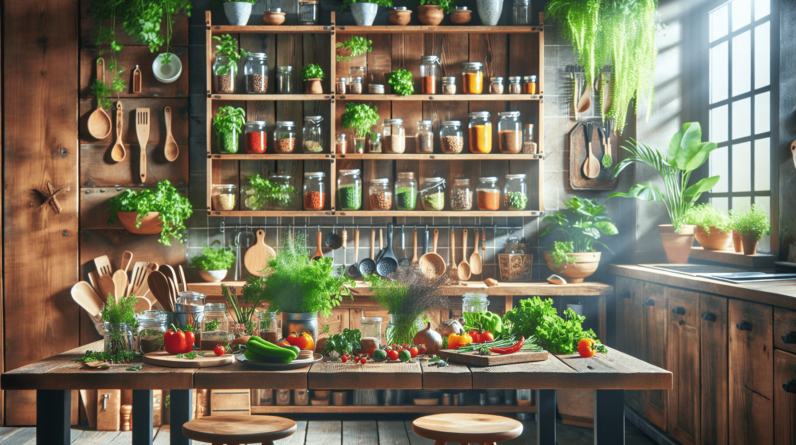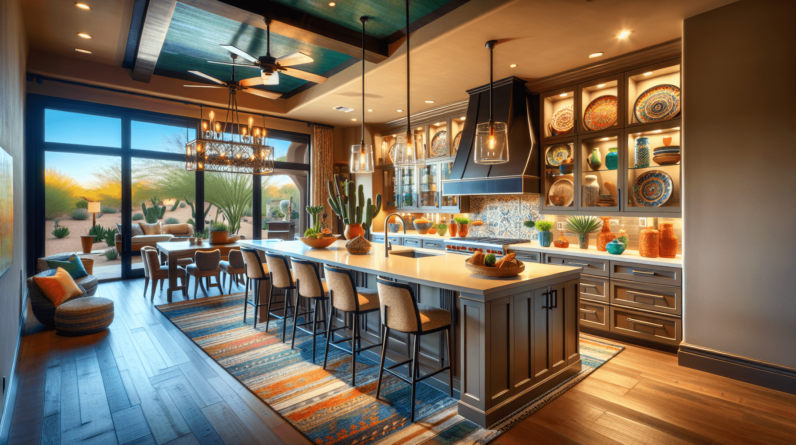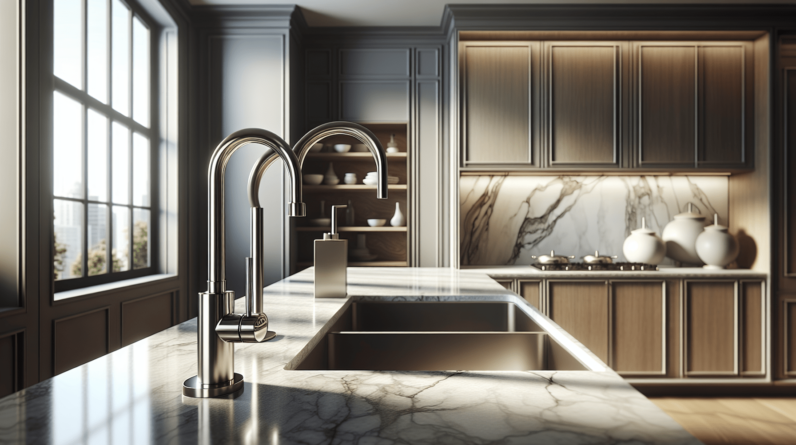
Have you ever felt completely overwhelmed by the size of your small kitchen? You’re not alone! Many people find themselves juggling limited space while trying to cook, entertain, or simply navigate their daily routines. Remodeling a small kitchen may seem daunting, but with the right approach and some creative ideas, you can transform it into a delightful and functional space.
Understanding Your Space
Assessing Your Current Layout
Before embarking on a remodeling journey, it’s crucial to evaluate what you currently have. Take some time to assess your kitchen’s layout. What works? What doesn’t? You might find it beneficial to draw a simple floor plan to visualize the space better. Jot down which areas feel cramped and which elements you want to keep or replace.
Determining Your Needs
Once you have a good understanding of your current setup, think about what you need from your kitchen. Are you an avid cook who requires ample counter space? Do you frequently host guests and need seating options? Understanding your requirements will guide your remodeling choices and help you create a space that feels just right for you.
Establishing a Budget
Understanding Costs Involved
Remodeling can be an exhilarating experience, but it often comes with financial considerations. Begin by researching the costs associated with materials, appliances, and labor. Establish a budget that aligns with your goals. If you’re unsure about specific costs, consider seeking out local contractors for estimates.
Creating a Contingency Fund
It’s wise to set aside some money for unexpected expenses. During renovations, you might uncover underlying issues in plumbing or electrical wiring that need attention. By creating a contingency fund, you can ensure that your project won’t be derailed by surprises, allowing you to keep your kitchen remodeling on track.
Design Considerations
Choosing a Style
As you start planning your remodel, consider the aesthetic you wish to achieve. Do you prefer a modern look with sleek lines, or perhaps a cozy farmhouse feel? Choosing a style early on can give you a cohesive vision and inspire your choice of materials and colors.
Color Schemes
Color can have a tremendous impact on how spacious your kitchen feels. Light colors like whites, creams, and pastels can create an airy and open atmosphere. However, darker shades can add warmth and depth, making sure to balance them with adequate lighting.
| Color Type | Effect | Best Use |
|---|---|---|
| Light colors | Spacious, airy feel | Small kitchens |
| Dark colors | Warmth, coziness | Accent walls |
| Bold colors | Vibrancy, personality | Accessories, decor |
Space-Saving Solutions
Maximizing Vertical Space
In a small kitchen, utilizing vertical space effectively can dramatically increase storage and functionality. Think about installing shelves above counters or cabinets that go all the way up to the ceiling. Wall-mounted racks can be a stylish way to display pots and pans while saving drawer space.
Choosing Multi-functional Furniture
Furniture that serves more than one purpose is a game changer for small kitchens. Look for dining tables that can extend for gatherings, or stools that can double as storage. A fold-down table can provide extra workspace during meal prep but can be collapsed when not in use, freeing up valuable floor space.
Storage Strategies
Smart Cabinetry
When dealing with limited space, traditional cabinets may not be enough. Consider custom cabinetry that fits your specific needs. Deep drawers can keep pots and pans organized, and pull-out shelves can make access to items at the back of cabinets more manageable. Don’t shy away from open shelving to display attractive dishes and store frequently used items.
Under-counter Storage
Taking advantage of your under-counter areas can optimize your kitchen’s functionality. Think about using sliding baskets or deeper drawer units that can house utensils, kitchen gadgets, and pans. If you have the option, a rolling cart can serve as additional prep space and mobile storage.
Efficient Workflows
The Kitchen Work Triangle
The kitchen work triangle concept emphasizes efficiency by arranging your refrigerator, sink, and stove in a triangular formation. This design reduces unnecessary movement while cooking, allowing you to work faster and more comfortably even in compact spaces.
Creating Zones
Designing your kitchen in zones can also be beneficial. For example, set aside specific areas for food prep, cooking, and cleanup. This approach not only enhances functionality but also keeps the space organized and tidy.
Lighting Solutions
Natural Light Enhancement
Letting natural light into your kitchen can make a world of difference. If possible, avoid heavy drapes or blinds, and instead, consider sheer curtains that filter light without blocking it. Strategically placed mirrors can also help reflect light and create a sense of openness.
Layered Lighting
Do not underestimate the power of good lighting in a small kitchen. Combining different types of lighting—ambient, task, and accent—can create a warm atmosphere and enhance functionality. Install under-cabinet lighting to illuminate work areas and consider pendant lights above dining or prep areas for added character.
| Type of Lighting | Purpose | Recommendation |
|---|---|---|
| Ambient | General lighting | Ceiling fixtures |
| Task | Focused lighting | Under-cabinet lights |
| Accent | Decorative lighting | Decorative fixtures |
Selecting Appliances
Compact Appliances
Opt for compact appliances that provide all the functionality you need while saving space. Many modern designs cater specifically to small kitchens, offering the same performance in a smaller footprint. A narrow refrigerator or a slim dishwasher can squeeze into tight corners.
Energy Efficiency
When choosing appliances, pay attention to their energy rating. Investing in energy-efficient models helps cut down on utility bills and reduces environmental impact. These savings can offset higher upfront costs over time, making them a smart choice for your remodel.
Flooring Options
Choosing the Right Material
Flooring is an essential component of any kitchen remodel. Generally, you’ll want a material that is durable and easy to clean, especially in a high-traffic area like the kitchen. Options include tile, laminate, and vinyl, each of which has unique advantages and varies in cost.
Patterns and Colors
When considering flooring, think about how patterns and colors can influence the perception of space. Larger tiles can create a more spacious look compared to smaller tiles or complex patterns. Lighter shades can open up the environment, making the kitchen feel larger.

Final Touches
Adding Personal Flare
Once the primary work is done, it’s time to add your personal touch. Use decorative elements that reflect your personality and style, such as unique dishware, colorful textiles, or artwork. Plants can beautifully tie your design together, adding freshness and a touch of nature.
Staying Organized
As you wrap up your remodel, think about how to maintain organization moving forward. Invest in drawer dividers, utensil trays, and pantry storage solutions that maximize your space and keep items neatly arranged. A little organization goes a long way in making your small kitchen feel even more inviting.
Conclusion
Transforming your small kitchen can be an incredibly rewarding experience. With the right planning, creative design solutions, and mindful choices, you can create a space that feels spacious, functional, and uniquely yours. It’s all about striking the right balance between aesthetic appeal and practical use.
So, are you ready to start your small kitchen remodeling adventure? Take the first step by jotting down your thoughts and airy ideas, allowing your creativity to shine while you craft a space that enhances your culinary adventures and daily routines. Remember, every small kitchen has immense potential; all it takes is a bit of vision and a dash of inspiration!






